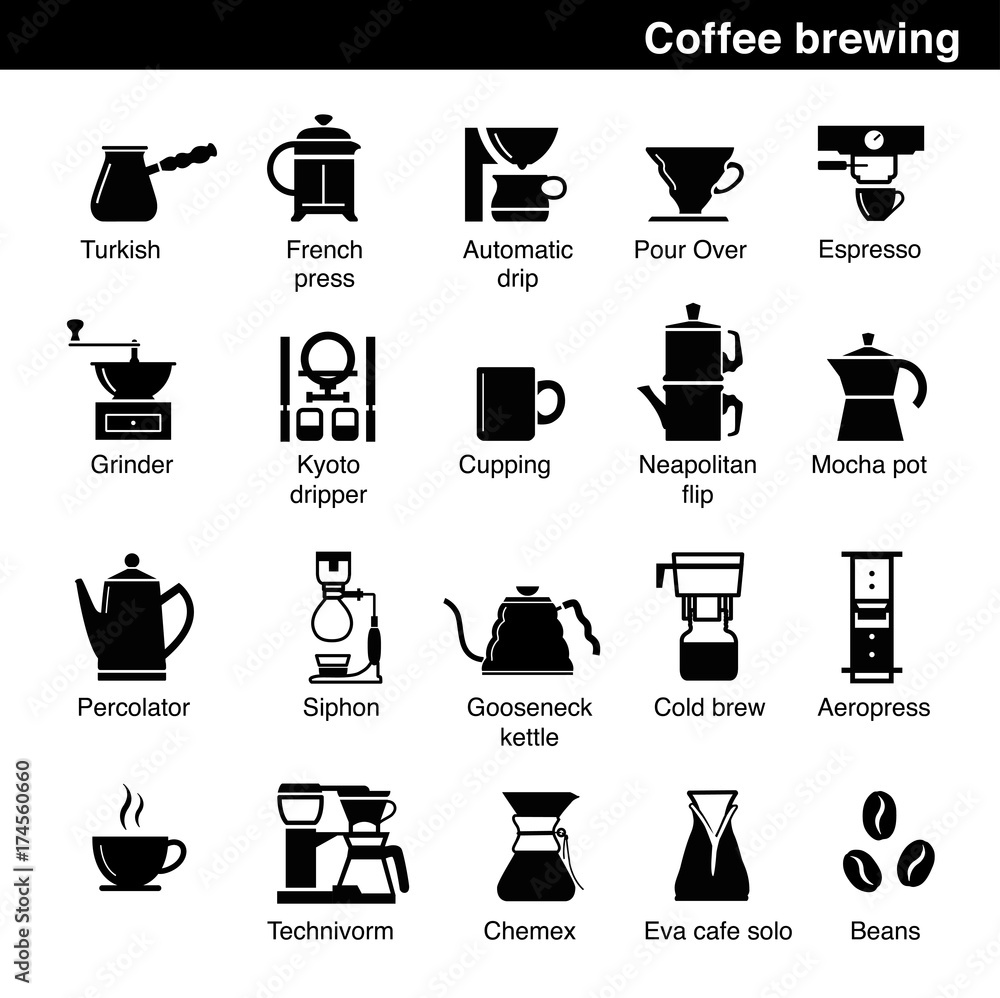Cutting-edge Coffee Brewing Methods to Boost Your Early Morning Habit
Cutting-edge Coffee Brewing Methods to Boost Your Early Morning Habit
Blog Article
The Scientific Research Behind Coffee Developing: Just How Temperature Level and Time Affect Your Drink
Recognizing the science behind coffee brewing discloses that temperature level and time are not mere variables but crucial elements that dictate the beverage's flavor profile and overall top quality. As we check out the nuances of these elements, the inquiry develops: how can one properly equilibrium temperature and time to attain that excellent brew?
The Chemistry of Coffee Removal
The chemistry of coffee extraction looks into the detailed procedures that transform raw coffee beans into the aromatic drink appreciated worldwide. This transformation primarily includes the solubility of various compounds existing in the beans, which are influenced by elements such as grind dimension, water top quality, and the brewing approach utilized.
During the developing process, warm water functions as a solvent, removing soluble substances, including caffeine, sugars, lipids, and acids, from the coffee grounds. Each substance adds to the flavor account, fragrance, and body of the final beverage. Acids are responsible for appetizing and brilliant notes, while oils add to an abundant mouthfeel.
The initial phases of developing remove acids and sugars, leading to a pleasurable acidity, while extended removal can lead to bitterness due to over-extraction of undesirable compounds. Recognizing these chemical interactions is critical for maximizing developing methods, as the equilibrium between extraction time and water temperature level can significantly influence the overall high quality of the coffee.
Suitable Developing Temperatures
Locating the ideal brewing temperature level is vital for unlocking the full capacity of coffee tastes and aromas - coffee brewing methods. Research study shows that the optimal array for brewing coffee lies in between 195 ° F to 205 ° F(90 ° C to 96 ° C) Within this variety, the extraction process effectively dissolves the preferable soluble compounds in coffee beans, causing a well balanced and tasty cup
Developing at reduced temperature levels, such as listed below 195 ° F(90 ° C ), may result in under-extraction, generating a weak and acidic brew with soft flavors. Alternatively, developing at temperature levels surpassing 205 ° F(96 ° C) can result in over-extraction, producing a rough and bitter preference due to the too much dissolution of unwanted compounds, such as tannins.
In addition, the excellent developing temperature can vary depending on the coffee bean kind and roast level. Lighter roasts often benefit from somewhat higher temperature levels to enhance their complicated taste profiles, while darker roasts may be much better matched to lower temperature levels to reduce resentment.
Ultimately, keeping precision in brewing temperatures is essential for accomplishing a harmonious equilibrium of tastes, ensuring that every mug of coffee provides a rewarding sensory experience.
Influence of Developing Time
Developing time plays a crucial function in figuring out the taste profile and total top quality of coffee. The removal process, which influences the taste, fragrance, and body of the drink, is mostly reliant on just how long the coffee grounds touch with water. Shorter developing times can result in under-extraction, causing a weak or sour browse around this site taste, as insufficient soluble compounds are liquified. On the other hand, extended brewing can bring about over-extraction, where unfavorable substances are released, resulting in a bitter or astringent preference.
Optimal brewing time differs relying on the approach used and the work dimension of the coffee. A French press generally calls for concerning four minutes, while coffee extraction is usually completed within 25 to 30 seconds. It is important to adjust brewing time in conjunction with other variables, such as water temperature level and coffee-to-water ratio, to achieve the preferred taste profile.
Recognizing the effect of developing time allows coffee fanatics to refine their developing techniques, eventually boosting the sensory experience of their cup (coffee brewing methods). With cautious focus to this variable, one can unlock the complete potential of the coffee, exposing its moved here one-of-a-kind qualities and subtleties
Developing Methods and Their Impacts

For example, methods like French press and cool brew permit a much longer steeping time, leading to a fuller body and durable flavor because of raised removal of oils and soluble solids. Conversely, espresso brewing utilizes high stress and a shorter extraction time, creating a focused shot that emphasizes extreme tastes and an abundant crema.
Pour-over strategies, such as Chemex or V60, provide an even more regulated extraction process, allowing the maker to control circulation rate and water circulation, which can boost illumination and quality. Percolation methods cycle water with the coffee premises numerous times, leading to a stronger, often bitter flavor.
Finally, the use of paper filters versus steel filters can also impact the last preference; paper filters normally produce a cleaner cup by capturing oils and fine bits, while steel filters enable even more oils to travel through, contributing to a fuller mouthfeel - coffee brewing methods. Understanding these subtleties can raise the coffee experience substantially
Tips for Refining Your Brew
A well-executed brew can change also the most basic coffee into an exceptional experience. Grind the beans simply before brewing to optimize quality, making certain the work size matches your developing approach-- coarser for French press and finer for coffee.
Water quality this link plays a vital role; use filteringed system water totally free from contaminations. The perfect developing temperature ranges between 195 ° F and 205 ° F(90 ° C to 96 ° C ) Also hot can burn the coffee, while also cool may under-extract tastes.
Timing is equally crucial. For immersion techniques, steeping for three to five mins is ideal, whereas drip techniques typically take about 5 minutes. Explore brew times to locate your recommended strength.

Conclusion
In recap, the detailed partnership in between temperature level and time is vital in the coffee developing procedure. Abiding by optimum developing temperature levels between 195 ° F and 205 ° F, together with precise timing tailored to each method, ensures the desired taste account is achieved. Recognizing these clinical concepts equips individuals to refine their developing methods, eventually causing a much more well balanced and satisfying coffee experience. Mastery of these factors is important for any coffee fanatic looking for excellence in their drink.
Comprehending the scientific research behind coffee developing reveals that temperature level and time are not mere variables yet essential elements that determine the beverage's taste profile and general quality. Comprehending these chemical interactions is crucial for enhancing brewing methods, as the equilibrium between removal time and water temperature can dramatically influence the general quality of the coffee.Brewing time plays a crucial role in establishing the flavor account and general high quality of coffee. By focusing on these elements-- bean top quality, grind size, water temperature level, soaking time, and ratio-- you can raise your coffee developing process, resulting in a constantly superior cup.
In recap, the detailed relationship between temperature level and time is paramount in the coffee brewing process.
Report this page